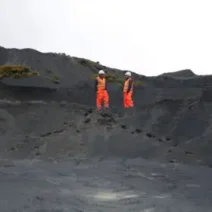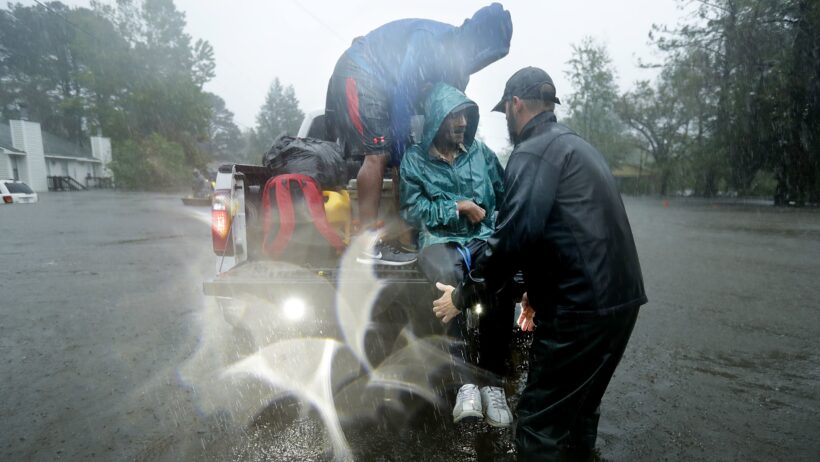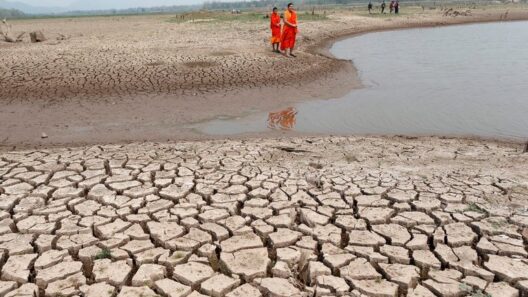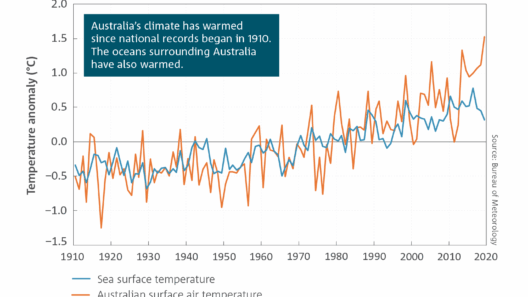As we wade through the complexities of our rapidly changing environment, the interplay between climate change and extreme weather events becomes increasingly prominent. Floods and storm surges, once sporadic or localized phenomena, have begun to flood our consciousness as emblematic of a planet undergoing unsettling transformations. The torrential rains and swelling tides are more than mere weather—they are harbingers of a new ecological reality, urging us to reassess our relationship with nature.
At their core, floods are nature’s response to an excess—an outpouring of water overwhelming landscapes and ecosystems. Storm surges, characterized by wall-like waves crashing upon coastal regions, illustrate the furious marriage of wind and water. These events, particularly when viewed through the lens of climate change, reveal profound implications that ripple outward, affecting human lives, infrastructure, and the ecological balance.
To assert that floods and storm surges can be blamed on climate change is to acknowledge a systematic shift in atmospheric conditions. As global temperatures rise—a phenomenon driven predominantly by greenhouse gas emissions—our atmosphere becomes more capable of holding moisture. This increased capacity, akin to a sponge saturated beyond its limits, precipitates heavier rainfall and, consequently, a heightened risk of flooding. Statistically, the frequency of extreme precipitation events has surged, correlating with our warming planet. For instance, regions that once experienced mild showers are now inundated with deluges, leading to flash floods that devastate communities.
The ocean, another vital component of our climate system, is equally affected by climate change. Rising sea levels, a direct consequence of melting polar ice and the thermal expansion of water, exacerbate the effects of storm surges. A minor increase in sea level can transform a harmless tropical storm into a catastrophic event, with floodwaters invading coastal towns and cities. The ocean’s power is amplified, creating scenarios where storm surges transfer destructive energy far inland, leaving behind a trail of debris and devastation.
However, attributing floods and storm surges solely to climate change oversimplifies the equation. While climate change undeniably serves as a catalyst, local geography, human infrastructure, and land use practices also play pivotal roles. Urbanization often leads to the paving over of natural landscapes, resulting in impervious surfaces that channel rainwater directly into rivers and streams. This urban sprawl, coupled with inadequate drainage systems, transforms gentle rainfall into torrents that bring urban centers to their knees.
Additionally, deforestation and soil degradation contribute to the ecological imbalance exacerbating flood risks. Trees that once absorbed rainfall and stabilized soil are cut down, allowing water to flow unchecked. The resultant erosion resonates through ecosystems, damaging habitats and displacing wildlife. It’s a cycle that perpetuates itself, turning lush landscapes into barren fields unable to absorb the deluge of rain.
The intricate relationship between climate change and extreme weather can be likened to a grand symphony. Each element—temperature, sea level, vegetation—plays its unique melody, yet together they produce a dissonance that manifests as floods and storm surges. The rising seas are but one movement in this ominous orchestration, and as we listen closely, we can hear the clarion call of urgency urging human intervention.
Understanding this narrative is essential for anticipating the consequences of future storms and floods. Mitigation efforts must be multifaceted, combining climate action—such as reducing carbon emissions and transitioning to renewable energy sources—with local strategies: enhancing urban planning, restoring wetlands, and preserving ecosystems that naturally manage stormwater. Innovative approaches, such as green infrastructure, can help cities adapt to this evolving reality, allowing them to function as dynamic entities capable of absorbing and redirecting excess water.
The anthropogenic essence of climate change adds a moral dimension to the discussion surrounding floods and storm surges. The communities most vulnerable to these weather phenomena often reside in regions least equipped to withstand them; socio-economic disparities widen in the face of environmental upheaval. It becomes a question of justice—a demand for equal protection for all citizens against the capricious forces of nature.
Moreover, there is a distinct psychological aspect tied to the increasing frequency of these events. As individuals bear witness to derelict landscapes and shattered lives, a sense of existential dread can settle in—a feeling akin to being cast adrift in tumultuous waters. Yet it is vital to transform this despair into resilience, to navigate the currents of climate change with a determined spirit, empowering communities to defend against impending disasters.
Education plays a crucial role in this transition. Awareness campaigns, community workshops, and school programs can illuminate the connections between climate change and weather extremes, fostering a culture steeped in environmental stewardship. Embracing a proactive mindset—a willingness to confront difficult truths and acknowledge our role within this crisis—will lay the groundwork for resilience.
In conclusion, while floods and storm surges are indeed intensified by climate change, their roots intertwine with myriad factors shaping our landscapes. Thus, the answer to the question of blame is not a solitary finger pointing at climate change but rather an acknowledgment of the intricacy of our shared existence. Our collective future hinges on the synergy we cultivate between climate action and adaptive strategies, beckoning a new era where humanity and nature coexist harmoniously amid the tempest of change.








